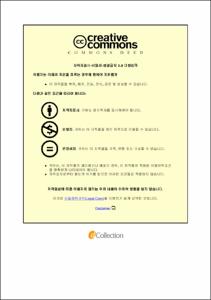만성폐쇄성폐질환 환자들의 초미세먼지(PM2.5)에의 노출에 영향을 줄 수 있는 생활습관과 주변환경
- Alternative Title
- The impact of lifestyle practices and environment on PM2.5 in patient with COPD
- Abstract
- Background & Aims: Exposure to particulate matter (PM) occurs is a global public health issue. In this study, we aimed to evaluate whether behavioral interventions to reduce PM exposure improve clinical outcomes in patients with chronic obstructive pulmonary disease (COPD).
Methods: We enrolled 104 patients with COPD aged 40 years or older from four hospitals in different areas of Korea. Internet of things-based sensors were installed at their homes to measure the indoor PM2.5 concentration for a year, and they conducted detailed questionnaires twice (at enrollment and the end of the study). The relationship between PM2.5 concentration, patients’ lifestyles, and the impact on COPD exacerbation were analyzed.
Results: The PM2.5 concentration was higher outdoors than indoors in most seasons, and, in particular, the difference was largest in winter (4.31±0.02 µg/m3). Compared to the time of the enrollment, lifestyle practice scores of the participant were generally higher at the end of the research. The lifestyle practices that affect to lower indoor PM2.5 concentration compared with the outdoors. And there was a difference between the seasonal items, the significant practices of winter were as follows: Operating indoor air filters (-4.69±1.12 µg/m3, p=0.001), Ventilating the home by opening windows (-5.29±0.89 µg/m3, p<0.001), Checking filters of air filters (-4.00±1.01 µg/m3, p=0.031), Refraining from going out when the outside PM2.5 concentration was high (-3.80±1.26 µg/m3, p=0.038), Choosing to go out in places with little traffic (-3.39±1.09 µg/m3, p=0.020), and Closing windows while driving (-4.33±0.77 µg/m3, p=0.002). The higher the educational level and economic status, the lower the indoor PM2.5 concentration. Some lifestyle practices affect the reduction in small airway resistance, marked as R5-R20 accounted for impulse oscillometry, and scores of the St. George’s Respiratory Questionnaire.
Conclusions: Some lifestyle practices and economic levels can reduce the indoor PM2.5 concentration and can even affect clinical outcomes.
- Issued Date
- 2023
- Awarded Date
- 2023-08
- Type
- Dissertation
- Alternative Author(s)
- Hajeong Kim
- Affiliation
- 울산대학교
- Department
- 일반대학원 의학과
- Advisor
- 이세원
- Degree
- Master
- Publisher
- 울산대학교 일반대학원 의학과
- Language
- eng
- Rights
- 울산대학교 논문은 저작권에 의해 보호 받습니다.
- Appears in Collections:
- Medicine > 1. Theses (Master)
- 파일 목록
-
-
Download
 200000691514.pdf
기타 데이터 / 1.1 MB / Adobe PDF
200000691514.pdf
기타 데이터 / 1.1 MB / Adobe PDF
-
Items in Repository are protected by copyright, with all rights reserved, unless otherwise indicated.